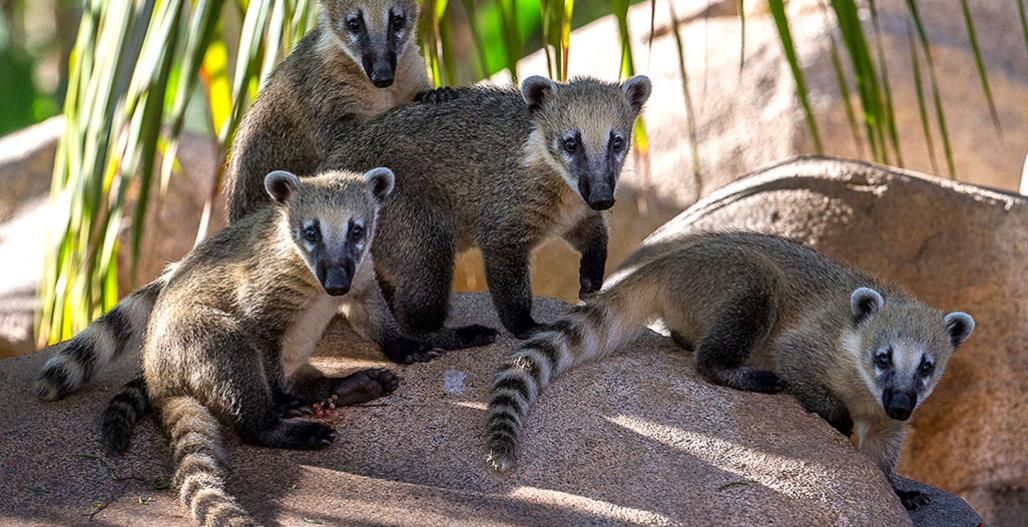The lesser-known coati (of which there are 4 species) belongs to the raccoon family. Most people are not aware that this beautiful medium-sized animal exists as its habitat is generally deep in the forests, tropical rain forests, mountainous regions and grasslands of Central and South America.
With thick fur, a coati’s coat can be either black or light brown on the back with lighter-colored fur on the bottom side of its body. Its ears and face are usually marked with white patterns while its tail has striking dark and light rings.
A coati has small ears, wide, bear-like paws, a strong jaw and an elongated snout. It has a slim body and a long, bushy tail which provides it with the balance it needs when climbing trees.
Coatis, like the normal raccoon one sees roaming about the countryside, is generally not very large and grows only to around 13 to 26 inches high. Although makes are usually larger and heavier than female coatis, your average coati will weigh anything from 7 to 18 pounds.
Because it is diurnal, the coati is active during the day. Coatis are also omnivores and feed on a very varied diet that consists of nuts, insects, fruit, eggs, small reptiles, seeds and birds. Its sensitive and pig-like snout can be rotated a whole 60 degrees in all directions and this assists the coati in moving items around on the ground and also in detecting food.
The male coati is a very solitary animal and lives alone. Female coatis live in groups (or bands) of 10 to 30 other coatis with their offspring. When faced with danger or potential threat to their territory, a coati will emit a snorting, grunting or chirping noise that will alert other members of the band to the potential threat.
Unfortunately, coatis are currently facing an increase in loss of habitat due to deforestation. In addition, they face becoming an endangered species due to the fact that they are often hunted.





